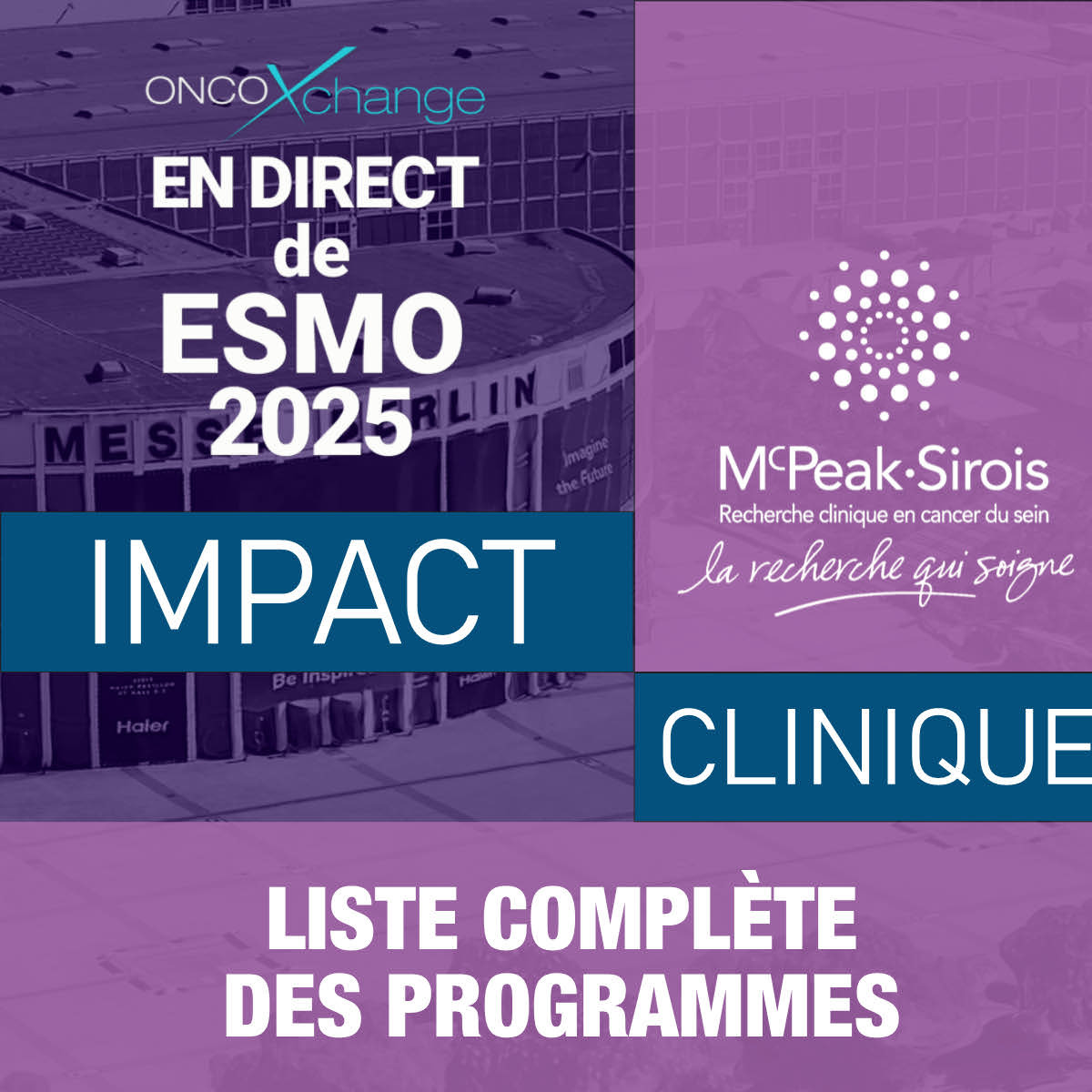
ASCO 2024 - DESTINY-Breast06: New HER2-ultralow Category Identified; T-DXd Equally Beneficial in This Subgroup
juin 2024
By Wayne Kuznar for oncoXchange
A new breast cancer subgroup, HR-positive, HER2-ultralow, has been identified that benefits from early treatment with the antibody-drug conjugate (ADC) trastuzumab deruxtecan (T-DXd).
In the Phase 3, randomized, open-label DESTINY-Breast06 trial, T-DXd significantly improved progression-free survival (PFS) versus physician’s choice of chemotherapy in patients with metastatic HR+/ HER2-low/HER2-ultralow breast cancer previously treated with at least one endocrine-based therapy.
At a median follow-up of 18.2 months, median PFS improved to 13.2 months with T-DXd compared with 8.1 months (HR, 0.62; P<0.0001) in patients randomized to chemotherapy in the HER2-low in the HER2-low population, of which 18% were considered to have HER2-ultralow disease, reported Giuseppe Curigliano, MD, PhD, of the University of Milan and European Institute of Oncology, Italy, at the American Society of Clinical Oncology (ASCO) annual meeting.
“T-DXd demonstrated efficacy in HER2-low metastatic breast cancer in an earlier line of treatment to DESTINY-Breast04,” he said. The improvement in PFS with T-DXd was consistent in the HER2-ultralow subgroup.
Ultralow: ≤10% membrane staining
The new proposed “ultralow” IHC category is not currently an ASCO entity, he noted. It comprises metastatic breast cancer with membrane staining ≤10% of tumor cells, he said.
DESTINY-Breast06 enrolled 866 patients with HR+/HER2-low or HER2-ultralow metastatic breast cancer previously treated with endocrine-based therapy for metastatic disease. Patients could not have received chemotherapy prior to entry. They were randomized to T-DXd every 3 weeks or chemotherapy at physician’s discretion (capecitabine, nab-paclitaxel, or paclitaxel).
Some 82% of patients had HER2-low tumors at the start of treatment and 18% had HER2-ultralow cancers. Treatment duration was a mean of 11 months in the T-DXd arm versus 6 months in the chemotherapy arm.
In the HER2-low population, median PFS was 13.2 months versus 8.3 months in the T-DXd and chemotherapy arms, respectively (HR, 0.78; 95% CI, 0.50-1.21).
More than half (57%) in the T-DXd arm had ≥30% reduction in tumor size compared with only 31% of the chemotherapy arm.
“What’s new in this study is T-DXd is approved all over the world for HER2-low disease. Here we have a new category that is HER2-ultralow in patients never receiving chemotherapy,” said Prof. Curigliano. “What's next? We are going to better evaluate the minimum [treatment] threshold to derive benefit from T-DXd.”
Most important, “is [the] work needed to identify this new class of patients,” he continued. “We need to have that reported in the pathology report at the level of staining for it.”
At data cutoff, 20.5% of the T-DXd arm and only 7% of the chemotherapy recipients remained on treatment.
OS data are immature but favor T-DXd
Overall survival (OS) data are immature as only 40% of OS events had occurred by cutoff. Interim analysis in the intent-to-treat (ITT) population (HER2-low plus HER2-ultralow) showed that the 12-month OS rates were 87.0% in the T-DXd arm versus 81.1% in the chemotherapy arm (HR, 0.81; 95% CI, 0.65-1.00). In the ITT population, 17.9% of patients treated in the chemotherapy group received T-DXd post-treatment discontinuation, he noted.
In the HER2-ultralow patients, 12-month OS rates again favor T-DXd over chemotherapy (84.0% vs. 78.7%; HR, 0.75; 95% CI, 0.43-1.29).
Different side effect profile
“Interstitial lung disease [ILD] remains an important safety risk of T-DXd.” Said Prof. Curigliano. The rate of ILD in the T-DXd arm was 11.3%, with cases of grade-5 ILD. Some 8.1% in the T-DXd arm had left ventricular dysfunction, mostly grade 2, compared with 2.9% in the chemotherapy recipients. There was no cardiac failure observed with T-DXd compared with 3 cases (0.7%) in the chemotherapy arm.
The results of DESTINY-Breast06 trial suggest that T-DXd can be moved to earlier in the course of treatment and offered to a larger group of patients (HER2-ultralow), said ASCO expert Erica Mayer, MD, MPH, from Dana-Farber Cancer institute, Boston. She pointed to the specific toxicity with T-DXd that should be discussed with patients prior to starting treatment.
T-DXd “will not be for every patient, but this is definitely exciting news for us that will have an impact on our practice,” she said.
ASCO chief medical officer Julie Gralow, MD, said “I think we will need a lot of discussion with our pathology colleagues on HER2-ultralow; in particular, the reliability of seeing a little bit of faint membrane staining versus not, “as oncologists and pathologists have a history of determining HER2 status: 3+, 2+, 1+, and 0.

Commentaires (0)